Nonoperative (casting)
1. Principles
Undisplaced or minimally displaced fractures
Conservative treatment is always recommended for undisplaced or minimally displaced fractures.

Displaced fractures
Displaced fractures that can be reduced, and maintain acceptable alignment, can also be treated conservatively, ie, oblique or transverse fractures, especially if the fibula is intact.
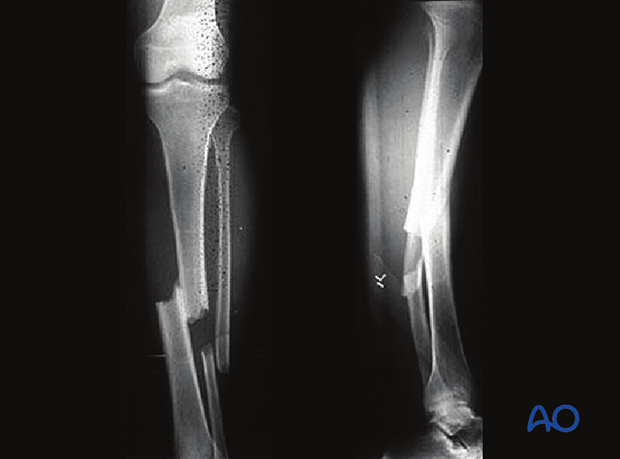
Long leg cast
Conservative treatment is initiated with the application of a long leg cast.
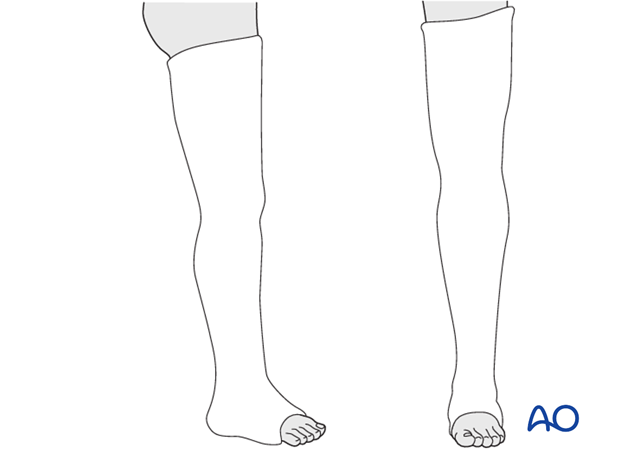
Sarmiento cast
A Sarmiento or patella tendon bearing cast (or PTB) is usually applied as the last stage of treatment for tibia fractures. At 4-6 weeks post injury, the long leg cast is removed and a Sarmiento cast is applied.
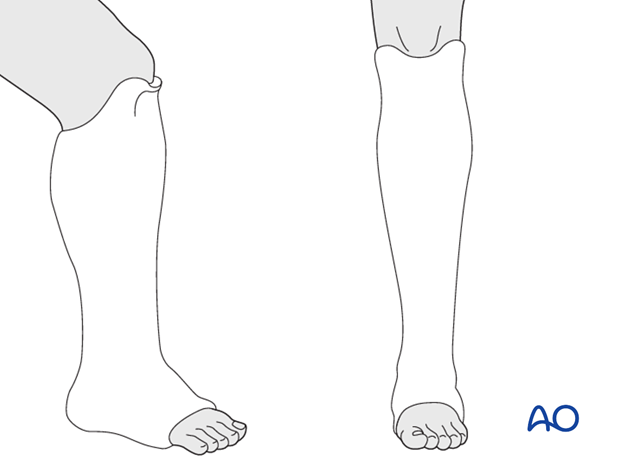
Teaching videos
AO teaching video: Upper leg circular cast
AO teaching video: Patella tendon bearing cast (PTB)
2. Reduction techniques
Positioning
The surgeon is seated on a low chair. The patient’s knee is flexed over the end of the table; the thigh is supported with padding.
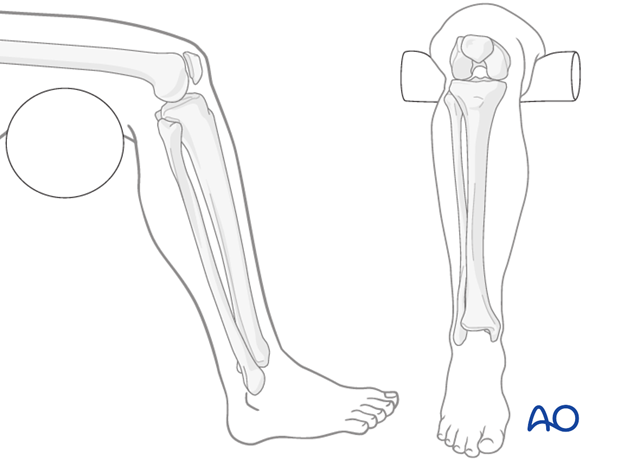
Correction of length
Illustration shows manual traction at the ankle to correct length.
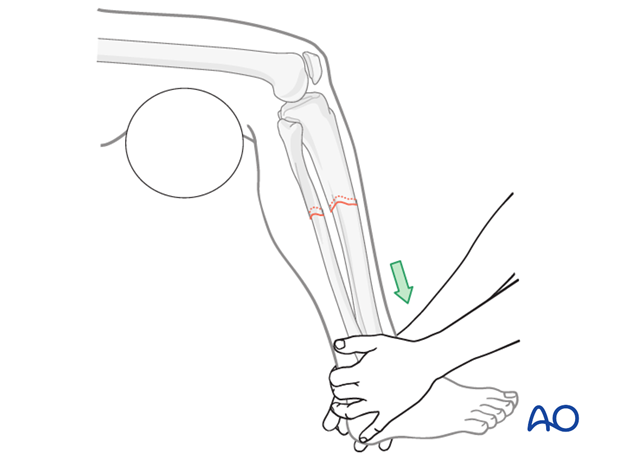
Correction of angulation
The two Illustrations show correction of varus or valgus deformity, and AP angulation, by manipulation.
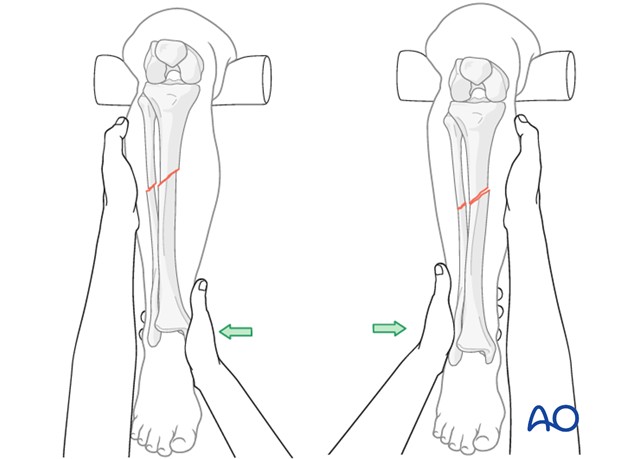
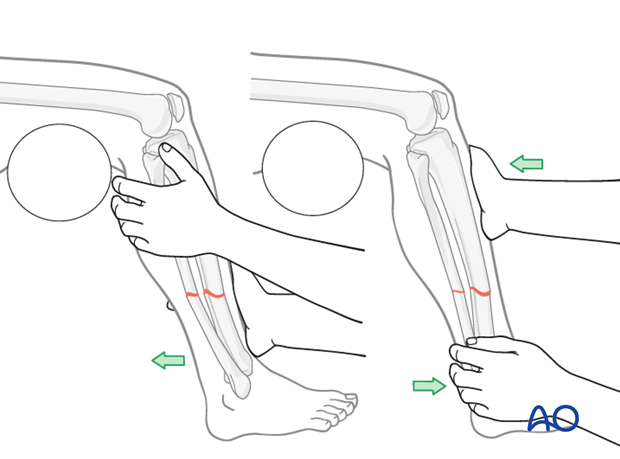
Correction of rotation
Rotation is usually corrected by palpation of the tibial crest, or with the help of an imaginary alignment of the middle of the second toe, the centre of the ankle, and the tibial tubercle.

3. Application of a long leg cast
Short leg section of the cast
First apply the short leg section of the cast up to the mid patella.
Mold the plaster as it sets.
Mold in the transverse and longitudinal arches of the foot, and around the malleoli, and mold a posterior bulge for the Achilles tendon.
Smooth the cast along the entire anteromedial border of the tibia.
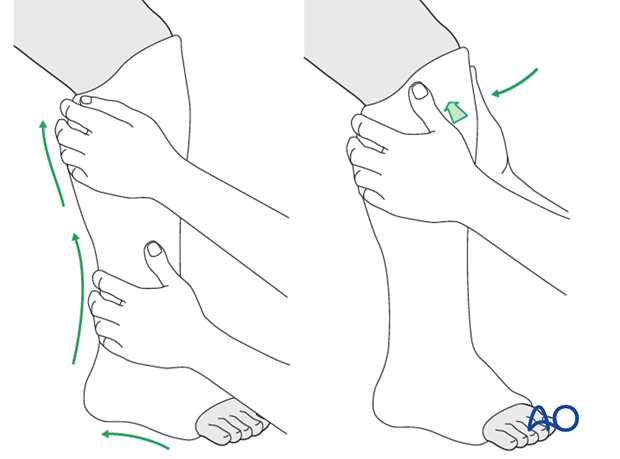
Mold the posterior side of the cast to assume a triangular shape, slightly convex at the anterolateral and -medial border, flat over posterior, anterior compartments and medial surfaces as shown in the illustration.
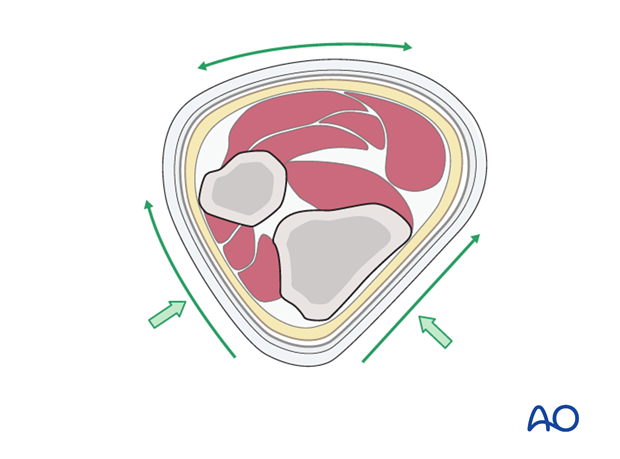
Thigh portion of the cast
When the cast has set, the knee is extended until 5 to 10 degrees short of full extension. Then the thigh portion is applied.
Proximally the cast extends to one third of the femur.
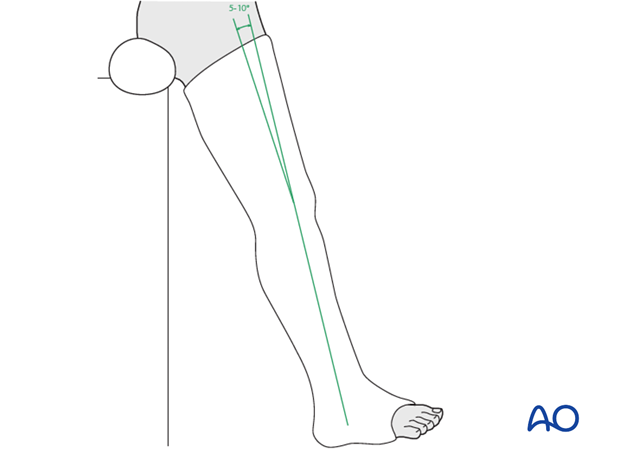
Molding of the epicondyles
Mold the cast above the medial and lateral epicondyles.
Trim the ends of the cast, reinforce the foot, and apply a walking heel if preferred.

4. Aftercare long leg cast
Mobilize the patient as early as possible.
For 3-7 days, until swelling subsides, the plaster is checked for slackness and adapted if required.
Oblique and spiral fractures are potentially unstable. Slight slipping of the fracture may be accepted, but if evidence of substantial displacement is found, internal fixation should be considered.
The long leg cast is normally applied for 6 weeks. After that it is changed to a Sarmiento or PTB (patella tendon bearing) cast.

5. Sarmiento or PTB (patella tendon bearing) cast
Principle
A Sarmiento cast or brace can be used initially in stable fractures in the distal half of the tibia.
Usually, however, the Sarmiento cast follows the application of a long leg cast after 4-6 weeks post injury.

Application of the Sarmiento cast
The patient sits on the edge of a table. The foot is steadied.
Stockinet and wool roll are applied, and the plaster extended over the knee.
Molding of the Sarmiento cast
Before setting, the plaster is firmly molded round the patellar ligament. It is then trimmed from the upper pole of the patella round to the upper part of the calf.
Check that knee movement is free before turning down the Stockinet and finishing in the usual way.
A rocker sole may then be applied and weight bearing and knee flexion commenced. The plaster is retained until union is sound.
6. Aftercare Sarmiento cast
Provide crutches, and encourage the patient to be out of bed within 1–2 days, and to bear weight as tolerated.
Usually full, unsupported weight bearing is achieved after 3-6 weeks.
Begin isometric exercises for all muscle groups immobilized in the cast. It is important to see the patient at weekly intervals for the first 4–6 weeks when weight-bearing methods are used. Especially isolated tibial fractures may go into varus position within a couple of weeks after the fracture. Loss of reduction must be corrected early to avoid malunion. There is also high risk of delayed or nonunion.
If correction is not successful, operative treatment is indicated
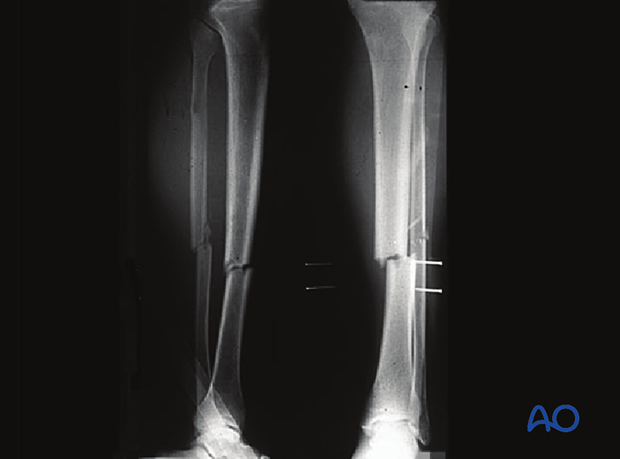
Change of casts
Change casts at 4-to-6-week intervals, depending on the stability of the fracture. Stable fracture patterns and those that gain stability early may be converted to a Sarmiento cast or fracture-brace as early as 4 weeks. Protect tibial fractures for at least 12 weeks. The average healing time is 16–24 weeks. Fracture instability after 24 weeks is considered a delayed union.
This x-ray was taken at 6 months post injury.
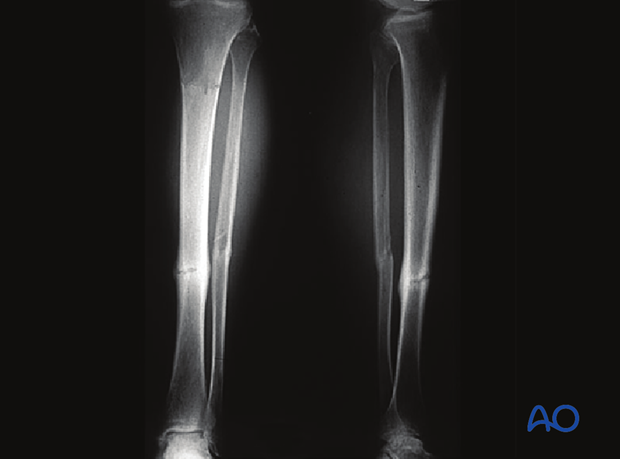
7. Case presentation wedge cast

Post reduction
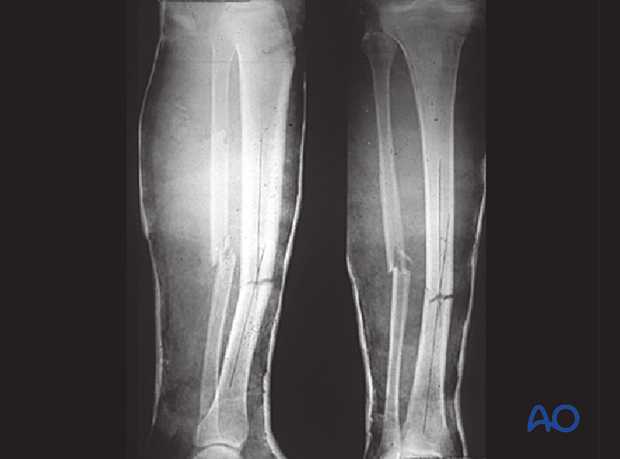
Wedge cast
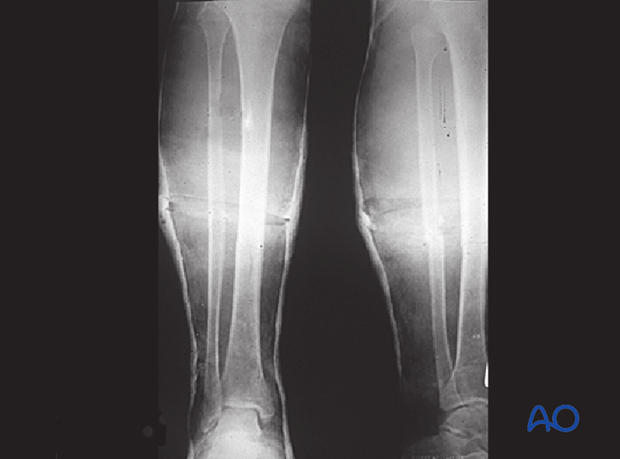
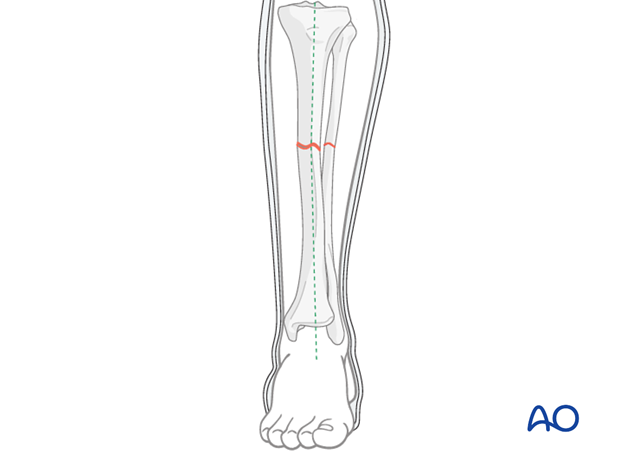

Six months post injury

8. Aftercare
For aftercare and rehabilitation following nonoperative treatment please refer to your local protocol.













